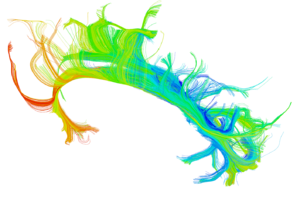Difference between revisions of "Projects:AtlasBasedDTIFiberAnalyzerFramework"
(Created page with ' Back to UNC Algorithms __NOTOC__ = Atlas Based DTI FIber Analyzer Framework = This projects gather some tools aiming at completing each step required to bui…') |
|||
| Line 8: | Line 8: | ||
= Description = | = Description = | ||
[[Image:AtlasBuilderLogo.jpg|thumb|300px|Length analysis of Cingulum tractography. Colors go from red to blue where red ones are the longest and blue ones are the shortest]] | [[Image:AtlasBuilderLogo.jpg|thumb|300px|Length analysis of Cingulum tractography. Colors go from red to blue where red ones are the longest and blue ones are the shortest]] | ||
| − | As regards post-processing step, We developped FiberViewer Light. It includes every clustering methods of the full version FiberViewer such as : | + | As regards the post-processing step, We developped FiberViewer Light. It includes every clustering methods of the full version FiberViewer such as : Length, Gravity, Hausdorff, and Mean methods but also a Normalized Cut algorithm. As in the full version you can also display a plane on the fiber. This tool works faster than the full version due to simplified visualizations. |
Finally, DTI Atlas Fiber Analyzer allows users to gather every information about a fiber by calling FiberProcess or DtiTractStat. Besides you can plot every statistical data such as FA or MD. Then, thanks to the tool MergeStatWithFiber you can insert those statistics on the original Fiber File in order to display it on Slicer. | Finally, DTI Atlas Fiber Analyzer allows users to gather every information about a fiber by calling FiberProcess or DtiTractStat. Besides you can plot every statistical data such as FA or MD. Then, thanks to the tool MergeStatWithFiber you can insert those statistics on the original Fiber File in order to display it on Slicer. | ||
Revision as of 15:56, 22 November 2011
Home < Projects:AtlasBasedDTIFiberAnalyzerFrameworkBack to UNC Algorithms
Atlas Based DTI FIber Analyzer Framework
This projects gather some tools aiming at completing each step required to build an Atlas. Concerning the first step as the creation and the mapping of the Atlas, DWI QC will be the appropriate tool. Then comes the tractography followed by a postprocessing step easily done by FiberViewer Light. Finally we will gather statistics thanks to DTI Atlas Fiber Analyzer.
Description
As regards the post-processing step, We developped FiberViewer Light. It includes every clustering methods of the full version FiberViewer such as : Length, Gravity, Hausdorff, and Mean methods but also a Normalized Cut algorithm. As in the full version you can also display a plane on the fiber. This tool works faster than the full version due to simplified visualizations. Finally, DTI Atlas Fiber Analyzer allows users to gather every information about a fiber by calling FiberProcess or DtiTractStat. Besides you can plot every statistical data such as FA or MD. Then, thanks to the tool MergeStatWithFiber you can insert those statistics on the original Fiber File in order to display it on Slicer.
Publications
Key Investigators
- UNC Algorithms: Jean-Baptiste Berger, Benjamin Yvernault, Clement Vachet, Yundi Shi, Martin Styner
